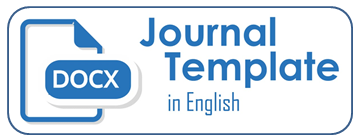Analysis of Design Strategy of Science Laboratory Room Model (Study at Junior High School in Kendari City)
Keywords:
Strategy. Model Design, Laboratory RoomAbstract
The purpose of this study was to analyze the design strategy of the social studies laboratory space model in a junior high school in Kendari City. Stages of the science laboratory model design in junior high schools (SMP). The design of the science laboratory room goes through several steps: 1) Creating a title. 2) Determine the administrative room and preparation of tools and materials 3) Determine the head of the laboratory table 4) Determine the storage space for tools and materials 5) Determine the tool preparation table 6) Determine the storage cabinet for tools and materials 7) Determine the practicum implementation space 8) Determine the table for the bag /student books 9) Determine the storage cabinet for tools and materials 10) Determine the design of the student practice table 11) Determine the location of the blackboard. The data analysis technique used in this research is quantitative and qualitative data analysis. Quantitative data is in the form of numbers derived from questionnaire validation and descriptive qualitative data is in the form of information from validators. The results of the design of a science laboratory space at a junior high school in Kendari City, which consists of 20 aspects, have been effective in their use. That is, twenty aspects have been practical but not optimal. The obstacles are: (a) the still low capacity of human resources where the laboratory manager is a science teacher who is not a special appointment for laboratory assistants; (b) the low frequency of laboratory utilization; (c) the laboratory management is not yet optimal. The results of the design of the Science Laboratory for SMP Model 6-2-1 in Kendari City are a unique design, reliable, simple in application, and used as a patent model to be applied in all SMP science laboratory practicum rooms. The application of this model will improve the quality of the implementation of practical activities.
References
Barnawi, Mohammad Arifin. 2012, SmartBook Managing Schools (Private), Yogyakarta: Ministry of National Education, SPTK-21, (Jakarta: Ministry of National Education, 2002) h. 12 Lanthanide Journal, Vol. 5 No. 1, 2017 – 85
Daughters of Divine love congregations: Enugu: Divine love Publishers.
Ezelora, R. (2001). A guide to a practical approach to Laboratory management and safety precautions.
Fattah Nana. (2008). Base Management Education. Bandung: PT Teenager Rosdakarya.
Fattah, Nana. 2004. School-Based Management (SBM) Concepts and School Boards. Bandung: CV Pustaka Bani Quraish
Gaspar Dado. (2009). Effectiveness of Science Laboratory Management for SMP/MTs in Nagekeo Regency, Province East Nusa Tenggara. Thesis Masters, not published. Yogyakarta: UNY
Gustafson, Kent L and Robert Maribe Branch. Survey of Instructional Development Models. New York: ERIC Clearinghouse on Information & Technology, Syracuse University
Government Regulation of the Republic of Indonesia Number 19 of 2005 concerning National Education Standards
Hamiyah, Nur and Muhammad Jauhar. 2014 Teaching and Learning Strategies in the Classroom. Jakarta: Library Achievement.
Susilowati. 2012. Effort Enhancement Ability Think Critical Through Method Learning cooperative Script On Eye Lesson IPS Class VIII A JUNIOR HIGH SCHOOL N 4 Kalasan . http://eprints.uny.ac.id/8556/
Wirjosoemarto, Koesmadji et al. 2004. Common Textbook Laboratory Techniques (Revised Revision). Bandung: FMIPA, UPI.
Downloads
Published
How to Cite
Issue
Section
License
Copyright (c) 2022 International Association of Management and Human Resource Development

This work is licensed under a Creative Commons Attribution 4.0 International License.

This work is licensed under a Creative Commons Attribution 4.0 International License.







